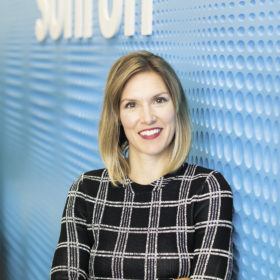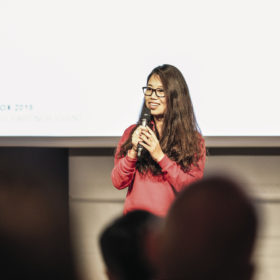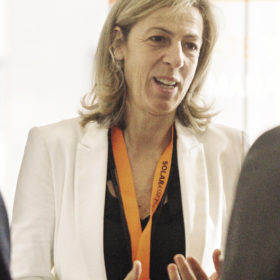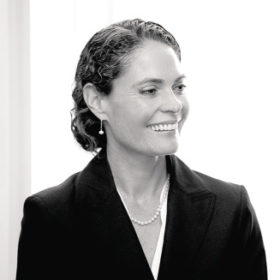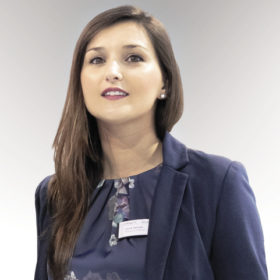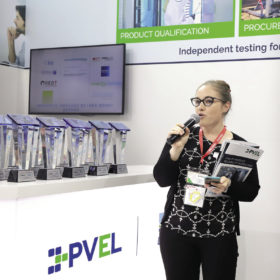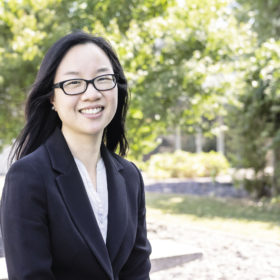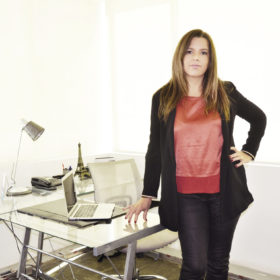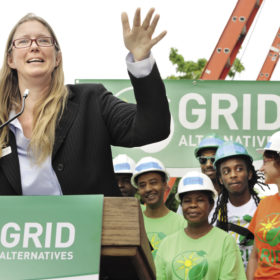In conversation: Competing for the entire energy system
As a leading proponent of the “solar as a service” model in the U.S. residential market, Sunrun is leveraging storage to move further into spaces that have traditionally been occupied by utilities and models based on centralized generation. Sunrun CEO Lynn Jurich discusses the future of residential solar in the United States.
In conversation: Building dreams in Australia and the US
E-mobility and storage system specialist BYD has already successfully entered the Australian market. Now, in spite of the ongoing U.S.-China trade war, it has decided to join forces with SMA Solar Technology to enter the U.S. residential storage market. Julia Chen, BYD’s global sales director, is broadly optimistic about the development of the global storage sector, as more and more markets are cutting previously high feed-in tariffs and turning solar roofop owners’ eyes to batteries.
In conversation: ‘Today, it’s not just the energy that you produce’
While based in Munich in Germany’s south, renewable asset management software provider 3megawatt’s first major clients were in the United States. However, as the European markets have transitioned beyond feed-in tariffs to the complexity of subsidy-free solar and wind arrays, the understanding of the need for asset management tools is rapidly increasing, says 3megawatt founder and CEO Edmee Kelsey.
In conversation: Californian stage set for smart solar, storage
Bernadette Del Chiaro has served as the executive director of California’s peak solar body, CalSSA, for the past six years. During this time the solar market in the state has expanded rapidly, and the stage is now set for the next phase of its development, as net metering recedes.
In conversation: Production ambitions
While China hosts the lion’s share of production capacity for solar modules, many other parts of the world harbor the ambition to build manufacturing industries of their own. Italy’s Ecoprogetti is building production lines all over the world in 2019, and pv magazine had the chance to catch up with the family-owned company’s CEO Laura Sartore, who sees India and the Middle East as the key markets for the PV production equipment business.
In conversation: The evolution of testing
Tara Doyle started her career in the solar energy industry more than 15 years ago, and today serves as the chief commercial officer at PVEL, which claims to be one of the first testing laboratories to focus on bankability for the downstream PV buyer community. The lab serves developers, financiers, O&M companies, asset owners, and insurers.
In conversation: Creating a common language for solar in the energy mix
As solar comes to represent a larger proportion of the global energy mix, direct comparisons with conventional energy sources, and even with other renewables, are becoming more and more important. This is reflected in a bid by the United Nations Economic Commission for Europe’s (UNECE) Expert Group to standardize reporting on solar energy potential. Long Seng To, Royal Academy of Engineering research fellow at Loughborough University, and part of the UNECE solar energy subgroup, discusses the draft standards.
In conversation: LatAm’s early PV leader, with enormous DG potential
The early development of PV projects in Latin America was spearheaded by one country: Chile. And while there remain prospects for large-scale project development, its distributed generation segment has the potential for enormous growth, says Marcela Puntí Martín, the general manager of the Chilean Solar Energy Association (ACESOL).
In conversation: Social justice solar expands, trains, empowers
Erica Mackie is the CEO of Grid Alternatives, a U.S.-based nonprofit organization that has helped nearly 15,000 low-income families to go solar at no cost. It has also provided more than 42,000 people with solar education and job training. Mackie co-founded Grid Alternatives in 2001 while working as an engineer in the private sector, and since then the organization has become a driving force for access and equity in the PV industry.
PV in need of a new chapter for wind
In part two of this feature on wind resilience in the PV industry, the lack of structural codes comes into focus. Weather events, and wind above all, are the most common causes of failure for PV plants. In the United States, the first steps have been taken to catch up with other industries and a dedicated chapter for PV is set to be included in the next update of the American Society of Civil Engineers code. In Europe, no such plans are in place.
